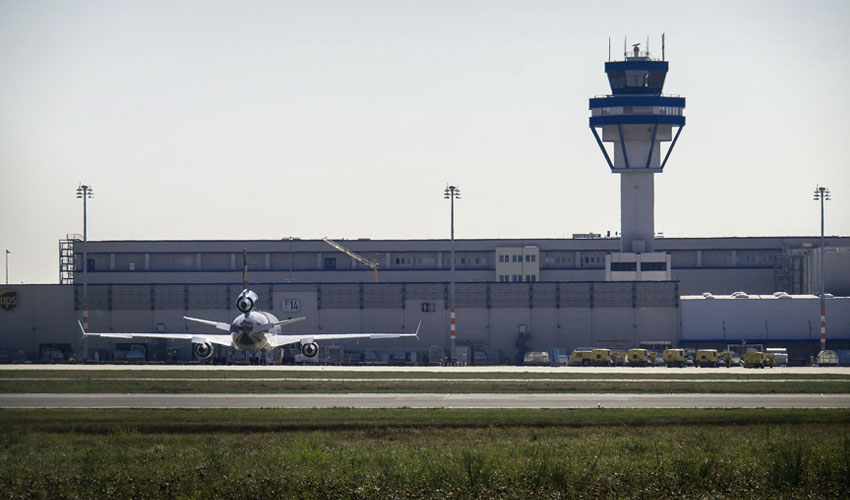Air cargo has typically represented a limited share of revenues for airports and airlines compared to passenger services. That might have led stakeholders to partially ignore the full potential of airfreight development. According to the International Air Transport Association (IATA), air cargo accounts for over 35% of global trade by value. This transportation modality is particularly suitable for carrying very high value commodities, often time perishable or time sensitive. For example, air cargo played a crucial role played during the pandemic by enabling the safe and fast distribution of billions of vaccines. Just like commercial airlines, freight forwarders have also had to overcome several challenges following the strict lockdowns by mid-2020. Since then, air logistic companies have learned to adapt to the new reality and that is why we are now seeing some signs of an anticipated recovery in the air cargo market.
The panorama for the coming months looks quite promising. Unlike passenger operations, the airfreight community has been able to respond quickly to changing demand. The International Civil Aviation Organization reports that in 2020, traffic numbers dropped by 60% with just 1.8 billion travelers, compared to 4.5 billion in 2019. Meanwhile, airfreight volumes were down by 11.6%. In 2021, the World Trade Organization expects global goods trade volumes to grow 8%. Two main market drivers for this would be the rebound in industrial production and the boom of e-commerce. Although the increase in demand brings hope, it also puts more pressure on global throughput. As long as aircraft belly cargo capacity remains partially restrained, changes might be needed in freighter fleets. What other variables could be defining the air cargo operating environment?
Air Cargo Market: At least two conditions are expected to last
Late recovery of international flights to further stress air capacity
Despite advancements in COVID-19 testing and the rapidly growing vaccinated population, the full recovery of long-haul travel may take longer than predicted. Early this year, IATA forecasted that global passenger numbers would reach 52% of 2019 levels in 2021. While domestic travel is taking the lead in terms of rebound, challenges for cross-border flights remain. A harmonized approach for reopening borders, the elimination of quarantine measures, and extending the use of digital health passports would be crucial to a broader return of these flights.
How does this outlook impact the air cargo market? The availability of belly capacity will be affected for some time. Experts indicate that the industry should also not count on passengers coming back at once. The increase in passenger volumes is rather part of a staggered process where regional development shows clear disparities. North America and Western Europe are by far the two major markets showing stronger growth. They account for 69% of all flight seats scheduled in June. On the other hand, aircraft that were parked for months cannot return to activity without the required maintenance.
The mission for the cargo business will be to look for more long-term alternatives to bring some capacity back even if with the existing fleet. We may see airlines continue using their “preighters” (wide bodies converted to freighters). Airbus and Boeing estimate that these conversions will form an increasing share of the growing global freighter fleet over the next 20 years.


Rates to remain strong for a while
Recent data shows that air cargo overperformed global goods trade in the first quarter of 2021. This is in part due to stronger customer confidence, new export orders, increasing industrial production and more supportive regulations. Improvements, however, are disparate across the air cargo markets. Middle East-Europe, North Pacific and Middle East-Asia trade lanes show the strongest growth so far, supported by solid economies. But while demand is rebounding, aircraft utilization remains tight pushing rates further.
The Baltic Exchange Air Freight Index (BAI) saw that rates from Hong Kong to Europe reached $4.73 per kg from $4.61 in April. Prices from Hong Kong to North America also increased, from $8.48 in April to $8.70 per kg in May. High rates are likely to continue this year as both, demand through the summer peak season and the vaccine rollout rise. Once travel barriers come down and the number of passenger flights increases, the situation would normalize.
Hot topic: Sustainability in air cargo operations
Something that we can expect in the next months is a stronger focus on making airfreight operations more sustainable. This is important both y from a cost perspective, but also due to the increasing commitment of the aviation industry to offset its impact on the environment. Compared to other transport modes, air cargo accounts for 2% of global carbon emissions. However, there is a high potential to further decarbonize the sector and achieve the reduction of 50% in net emissions by 2050.
One strategy is to prioritize the use of more efficient aircraft. Aspects like design, weight and fuel consumption are key to potentially lowering emissions and even delivering parcels more quickly. In addition, operators can draw upon resource management solutions to reduce unnecessary deployment of ground support equipment. Staff can quickly and easily track unit load devices (ULDs). Then, ULDs can be allocated as needed with smarter prioritization. Another advantage of smart software is its role in determining whether or not a vehicle requires maintenance. This enables the optimal planning of these activities, while reducing related costs and workloads.
Air Cargo Market: What is next?
There are plenty of reasons to be positive about the air cargo market performance. So far this year, business confidence has remained strong, authorities have established more flexible regulations and exports have increased. Moreover, according to expert projections, demand is expected to continue rocketing, especially with the imminent expansion of e-commerce. All this will contribute to a favorable operating environment for airfreighters. Nevertheless, the pandemic will continue putting the industry´s resilience to the test with issues such as the capacity crunch.
The still prevailing uncertainty makes market fluctuations foreseeable. More than ever, air shippers should plan for the upcoming months and secure additional capacity in all safety ways possible. Now is the time to look for innovative solutions that enable more accurate forecasting. By doing so, businesses will be able to optimally manage all resource requirements and costs to compensate for elevate rates. In this quest for efficiency, efforts to tackle environmental matters must go hand in hand. The development of long-term strategies to achieve sustainable air cargo operations is critical to preserve our planet, support our economies and guarantee future air cargo connectivity.





0 comments on “Air Cargo Market: What to Expect in the Coming Months”